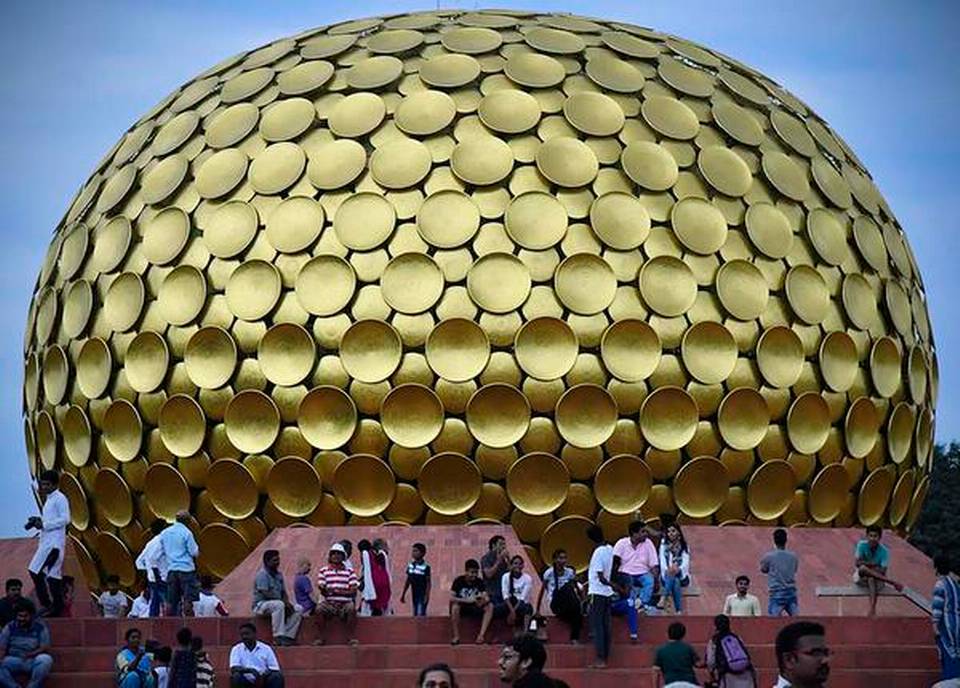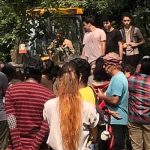
It is unfortunate that this peaceful enclave has been caught in the crosshairs of an intransigent feud that goes against the ideals of both Sri Aurobindo and the Mother

Sarosh Bana
Published: 18 Jan 2022, 5:00 PM
Tranquility was shattered and a peaceable community torn asunder last December as bulldozers rolled into the forested idyll of Auroville, the international township in southern India that embodies the vision of Indian philosopher, nationalist, poet and seer Sri Aurobindo.
Residents who tried to peacefully resist the onslaught were overpowered by the excavators that tore through the settlement’s Youth Centre and razed over 900 trees across 67 acres in a frenzy to carve out the 4.3 km long “Crown Corridor project”.
The project, which entails a 75-metre-wide circular road scything through the community, has been envisaged by Auroville’s Town Development Council (ATDC), Auroville Foundation, and newly-appointed government authorities. They apparently disregarded an alternative development proposal presented to them by a number of Aurovillians that would have marginally realigned the Crown concept so as to conserve the “precious forest and water catchment systems that are vital to the whole bioregion”.
Located mostly in Tamil Nadu and partly in the neighbouring Union Territory of Puducherry, Auroville exemplifies unity in diversity, with two-thirds of its 3,500 inhabitants hailing from 59 other nations, and from all age groups, backgrounds and cultures.
Taken over by the Central government in 1980 through the Auroville Emergency Act, 1980, Auroville was granted autonomy under the Auroville Foundation Act passed eight years later under the UNESCO division of the Ministry of Education (later, Ministry of Human Resource Development (HRD)). The architect of the Act was Dr Kireet Joshi, disciple of Sri Aurobindo and his spiritual collaborator, the Mother, as also the confidant and Education advisor to then Prime Minister Indira Gandhi.
Gandhi had always been supportive of Auroville, having built a special bond with the Mother whom she met during her first visit to Pondicherry, and to the Sri Aurobindo Ashram, in 1955 with her father, the then Prime Minister Jawaharlal Nehru. Gandhi had reportedly also asked for the Mother’s counsel on the war for Bangladesh in 1971. A year after the Mother’s passing in 1973, Gandhi again visited the Ashram and stayed a night there, describing Auroville as: “An exciting project for bringing about harmony among different cultures and for understanding the environmental needs of man’s spiritual growth.”
Amidst the present crisis, the aggrieved residents of this first and only internationally endorsed ongoing experiment in human unity and transformation of consciousness have repeatedly petitioned the National Green Tribunal (NGT) of South Zone, based in Chennai, and have been rewarded, though fitfully, with a series of short-term stays against further project construction.
Auroville arose from a parched plateau, says Kundhavi Devi, an Auroville resident for the past 15 years, and its forests, farms and water bodies today bear testimony to the self-healing power of Nature when it is assisted with concern and commitment. The greening of its landscape is a big success story of Auroville, for which it has received international acclaim.
Some Aurovillians see a political angle to the destructive intrusion into the township, pointing out that the Crown project has been expedited after Tamil Nadu Governor RN Ravi, Puducherry Lt Gov Tamilisai Soundararajan, and Gujarat cadre IAS officer, Dr Jayanti Ravi, took over last year as the chairman, member and secretary of the Governing Board of Auroville Foundation respectively.
In an e-mail welcoming the Governing Board last October, ‘Members of the Forest Group of Auroville’ stated, “Residents are working hard to cooperate and find solutions to the creation of Detailed Development Plans [DDPs], assess the land and environmental situation, generate Environment Impact Assessments [EIAs] and agree upon policies and processes to move forward in harmony to the vision of the Charter of Auroville as well as the Master Plan perspectives 2025.”
They indicated that with some ‘adjustments’ in ‘the present development plans’, large tracts of the Bliss Forest and Darkali Forest, as well as two local check dams, can be saved from total destruction.
A forester who has been a resident since 2002 and goes only by her first name, Natasha, says Aurovillians are not opposed to development, but do look to participatory and collaborative planning to ensure that any development considers the environment and ground realities. “We’re not simply planting trees, but creating an ecosystem comprising trees, shrubs, woody species, creepers, lianas, that host insects, birds, animals, microorganisms, and fungi,” she adds.
In their complaint before the NGT against the Auroville Foundation, the Union Ministry of Environment, Forests and Climate Change (MoEFCC) and the Department of Environment of Tamil Nadu, Navroz Mody, a 76-year-old Auroville resident working for the township’s forestry and green belt for the past two decades, and co-habitant Sandeep Sarah, who has done similar work for the past nine years, submitted that “the ongoing destruction is not in consonance with the ideals of Auroville and principles of sustainability”.
Their main argument is that the large Crown Road project spread across 20 villages has not had an EIA to examine its impact. They say the ‘authoritarian’ approach to rapid urban development overrides the community’s long-standing collaborative planning processes and ignores environmental considerations, even as much of the land has not yet been acquired for the project. Fearing that the NGT will generally not question a central government project, and if the petition were to be ultimately dismissed, the petitioners might appeal before the Supreme Court.
The Crown Corridor had been notified by the HRD ministry in 2001 as part of the Mother’s ‘Auroville Universal Township Master Plan – Perspective 2025’, which was accepted by the Residents Assembly in 1999 and notified in the gazette in 2010.
In its affidavit to the NGT, the Auroville Foundation maintains that a major part of the right of way (RoW) has already been cleared and infrastructure installed alongside. “Auroville Foundation is now clearing the last parts of the Crown RoW with a width of 16.7 m,” it states. “The land area of the Crown RoW is only 0.36 percent of the total Auroville Master Plan land area.” The Foundation and ATDC allege that the Youth Centre and many of the 900 trees that were bulldozed were deliberately built and planted over sections of the proposed Crown to block its development.
Terming this stance “misleading”, Auroville Working Committee member Hemant Lamba says the planned RoW requires the felling of over 150,000 trees. He deems politics the most destructive for a social and cultural experiment like Auroville that aspires towards an ideal society where there is ‘No Religion, No Politics, No Drugs and No Alcohol’, and where most residents shun all political activity.
Architect and designer Tejaswini Mistri-Kapoor, a former ATDC member who has lived and worked in Auroville for the past 18 years, says Auroville’s Master Plan is based on a galaxy model developed in the 1960s by French architect Roger Anger, in collaboration with the Mother. After Mother’s time, this concept was developed into a Master Plan that is more of a concept note as it lacks the required DDPs necessary to ‘flesh out’ the plan’s sketches, before moving towards implementation.
“Since the arrival of a new government-appointed Secretary to the Auroville Foundation, the pressure exerted by authorities on the Auroville community to implement the Master Plan has increased in intensity, and has focused on rapid development of the Crown way,” notes Mistri. “This rigid interpretation and imposition of the plan goes against its own spirit as it states that it will ‘neither be traditional, nor static and rigid’, and has in-built review processes.” She adds that this includes five-yearly DDPs, which have never been done.
It is unfortunate that this peaceful enclave has been caught in the crosshairs of an intransigent feud that goes against the ideals of both Sri Aurobindo and the Mother.



